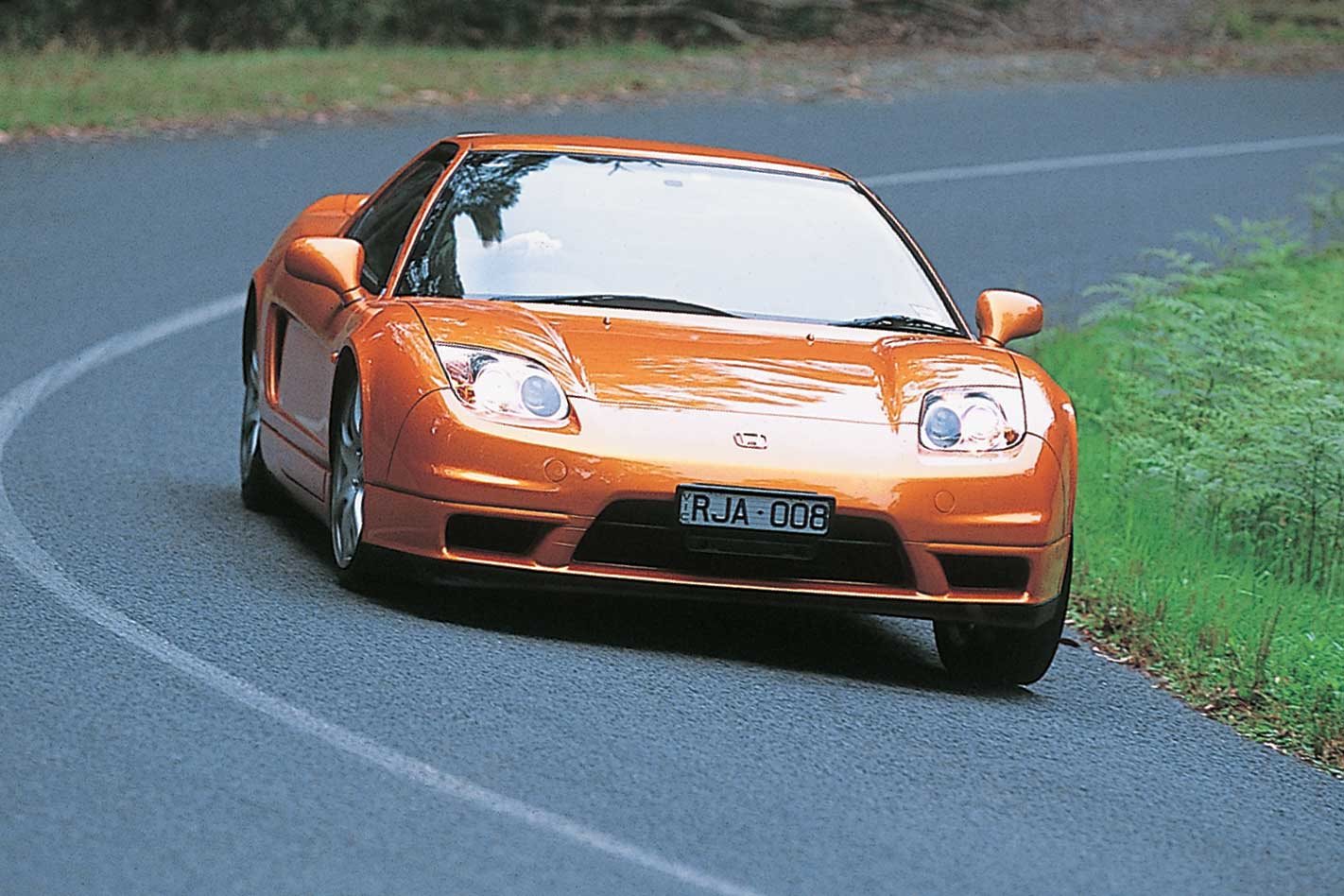GT cars? Yep, Japan Inc has been responsible for plenty of them. The Skyline GT-R is perhaps the most notable, but you’ve also got to pay respect to generations of Mazda RX-7s, Mitsubishi EVOs and plenty more.
This feature was originally published in MOTOR’s March 2004 issue
But what about true exotica? Where are the J-built competitors to Ferraris and Lamborghinis? Where’s the Japanese equivalent to a 911 or Boxster?
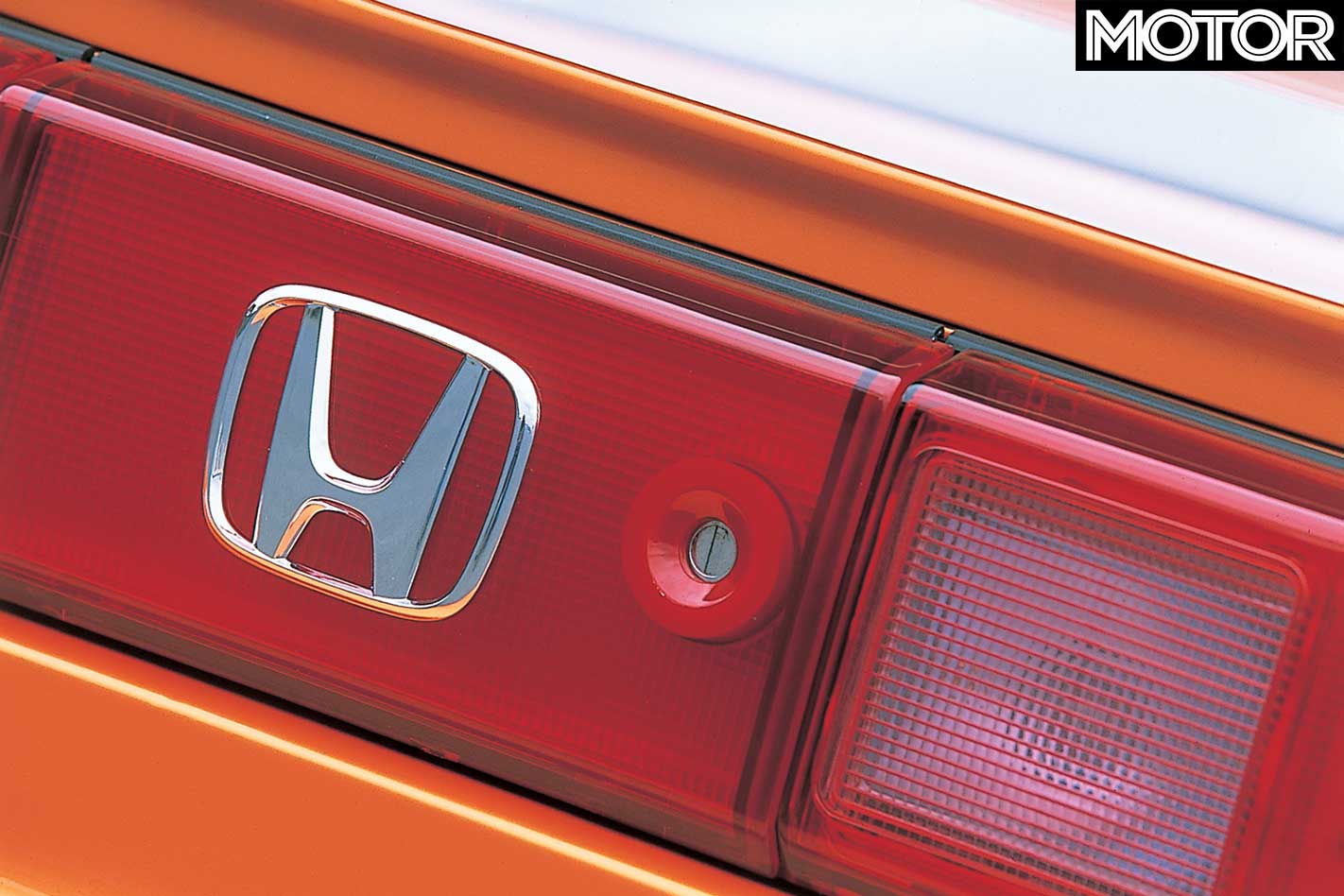
Nope, for a country so well known for looking at what the rest of the world is doing and then having a lash at it themselves, the Japanese have been conspicuously quiet on the subject of exotic motors.
Except Honda. Since as far back as the very early ’90s, Honda has been building the NSX, which, on the basis of its intent, design and performance, really is the full nine exotic yards. When you consider Honda’s long-time links with Formula One, it’s no real surprise to learn that it alone figured it had the credentials to build Japan’s first supercar.
Even broken down into bite-sized chunks, the NSX is a complicated piece of work.
For a start, Honda realised that if it wanted the thing to be taken seriously, it needed to have a mid-mounted engine. Stuff like that is not negotiable when it comes to supercars, although Porsche might like to disagree on the basis of its 911 GT3, and Mercedes-Benz would probably cry foul on behalf of its SLR McLaren. But you get the idea.
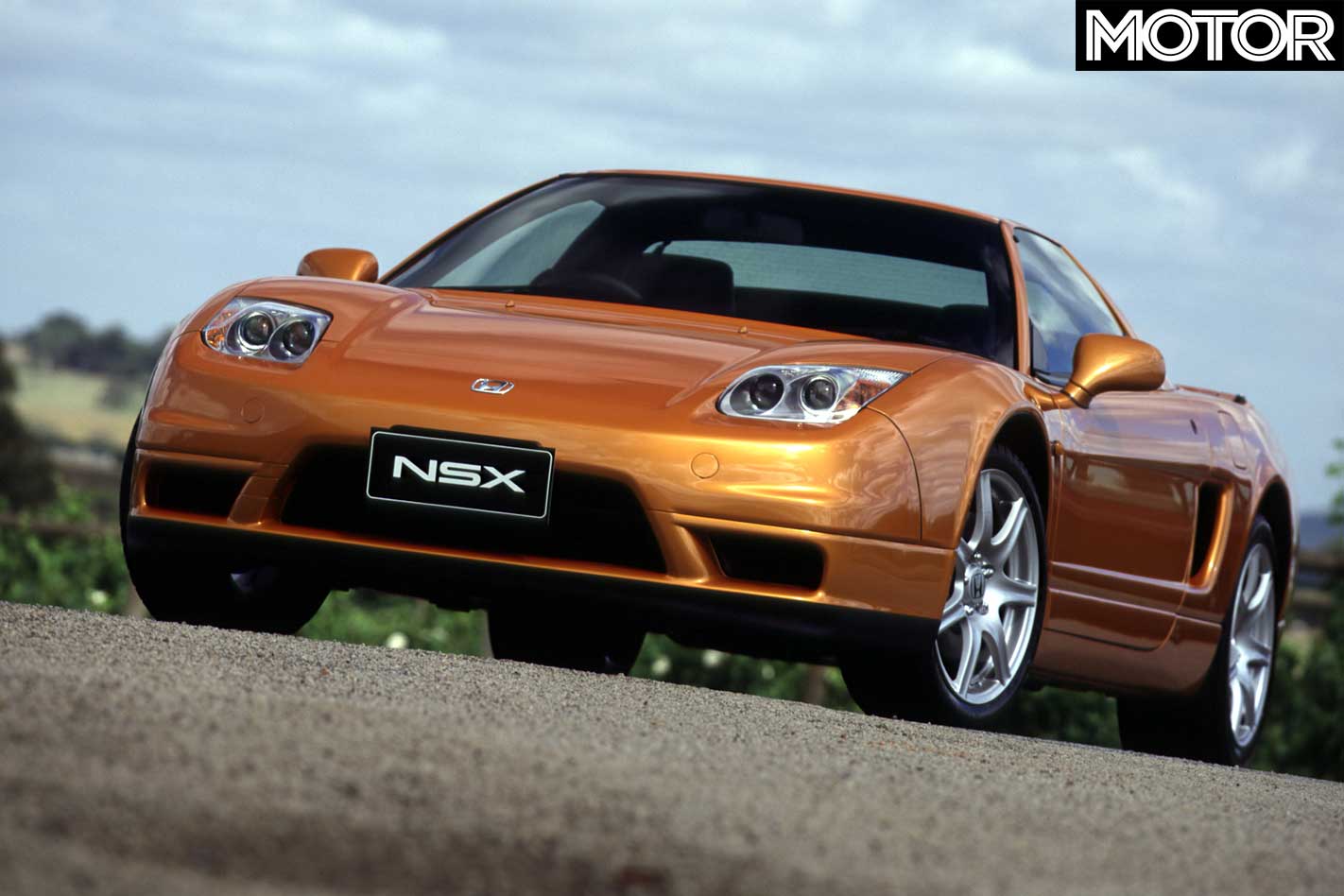
Four-wheel independent suspension by upper and lower wishbones also had ‘supercar’ stamped all over it, and the NSX was one of the first (if not the first, I dunno) Hondas to be fitted with the company’s increasingly common electrically assisted power steering.
Figuring that a four-cylinder was never going to cut it, and realising that it knew more about V6s than V8s, Honda went down the V6 route. That meant the car would never have the stratospheric power output of a bent eight, a V12 or even a V6 with a pump bolted to it, so weight reduction became the name of the game. To that end, the NSX copped an all-aluminium body, saving as much as 200kg over the equivalent body in steel.
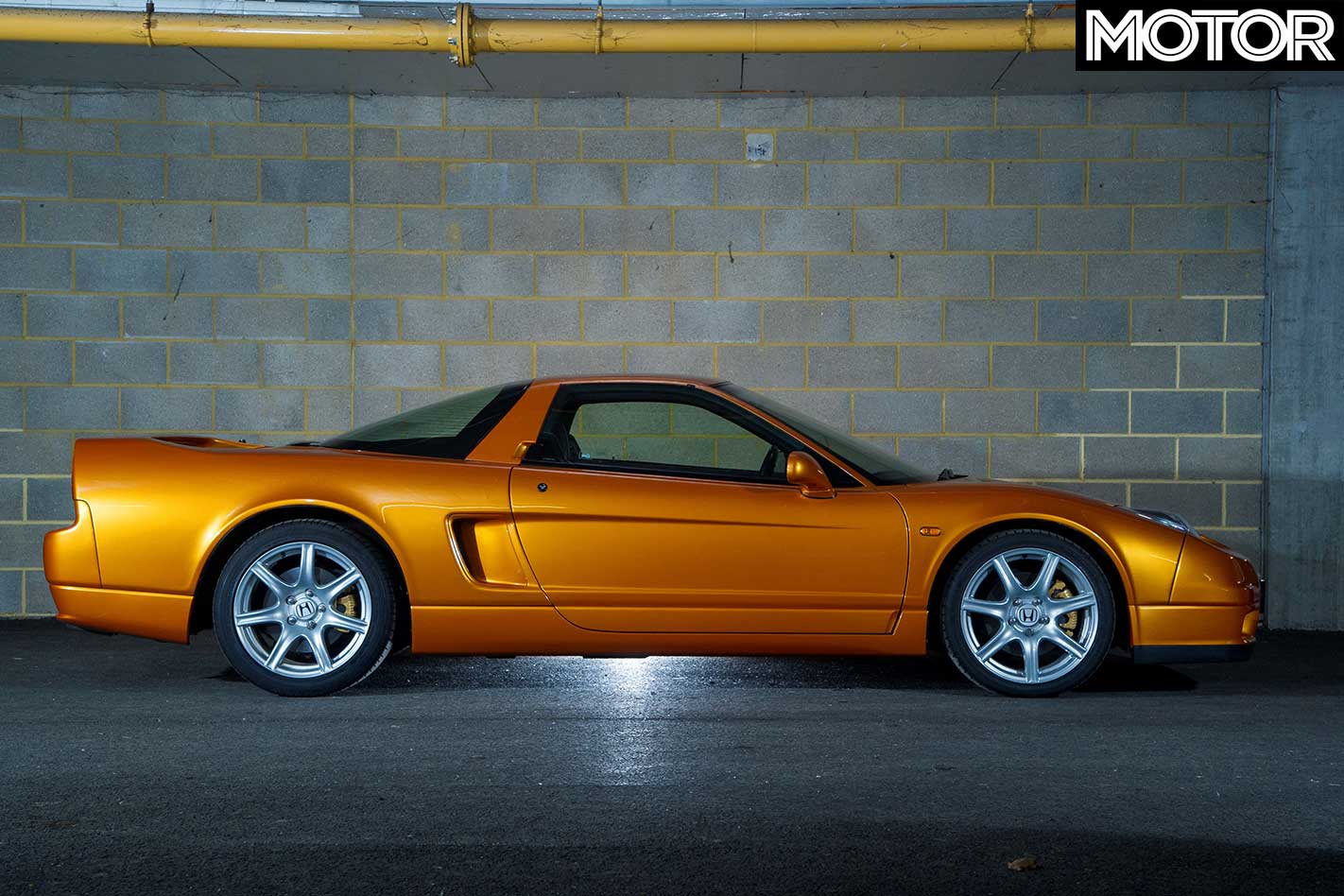
The muscular haunches, sloping nose and cab-forward design – as well as the detail stuff – place the NSX firmly in exoticar territory, and while it might lack a little aggression from some angles, it’s certainly pretty enough. There’s a bit of Le Mans racer in there, too, just for good measure, and you’d go a long way to find anyone who didn’t find the overall look pretty provoking.
Inside, there’s just enough generic Honda stuff to be a bit disappointing, although at least it’s logically laid out and utterly ergonomically sound. You sit low, with the fairly high waistline making the cabin feel cosy, the seats offer plenty of the right kind of support and the big dash pod stares back at you, even if it doesn’t have the chrome bezels and flickering white needles of a trad supercar.
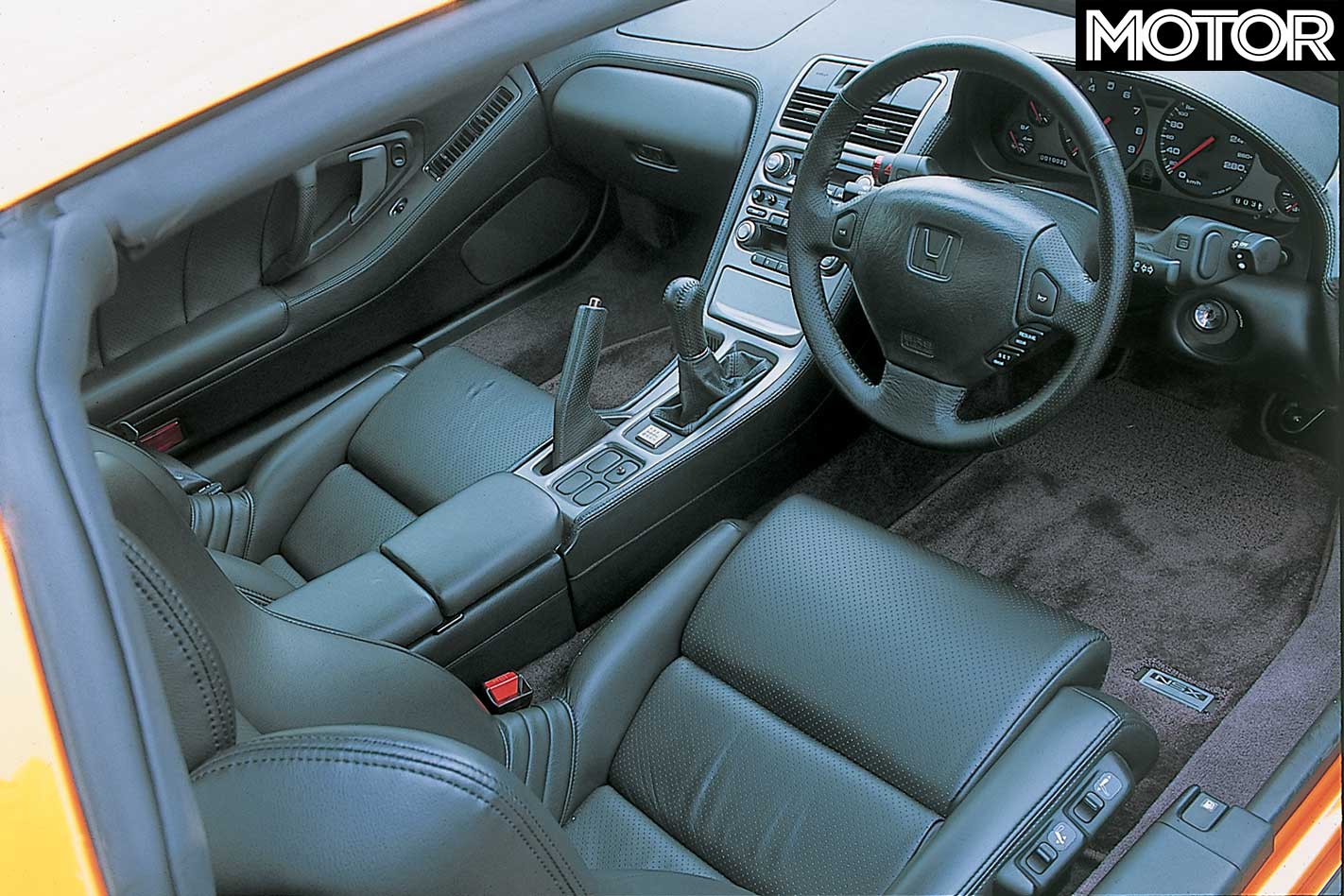
Under the aluminium engine cover lurks Honda’s feistiest engine ever to grace a four-wheeler (to that point in time, anyway). In its original form, the engine measured 2977cc thanks to an oversquare 90 x 78mm bore/stroke relationship. That meant it could produce relatively big numbers provided you revved it – no hardship with a stirring 8000rpm redline.
On a 10.2:1 compression ratio, it made 188kW at 6800rpm and 284Nm at 5400rpm. Obviously, then, she was a revver and not a slugger, judging by that torque peak.
Transmission choices amounted to a five-speed manual and a four-speed automatic (with a column-mounted shift stalk) although why anybody would have bought the auto is beyond us. Then again, Porsche sells an awful lot of Tiptronic 911s and Boxsters, doesn’t it?

It got some under-lid tweaks in 1997, when the capacity was punched out to 3179cc via a bore-out to 93mm (stroke remained at 78mm). Power (on the manual only) jumped to 206kW at 7300rpm and torque climbed to 298Nm at 5300rpm. And just to make the manual even more tempting, Honda upgraded the tranny to a six-speed.
The only real change to the styling formula came about in 2002, when the body was revised slightly to include fixed headlights and a slightly more modern look (although, overall, it was looking a bit dated by then).
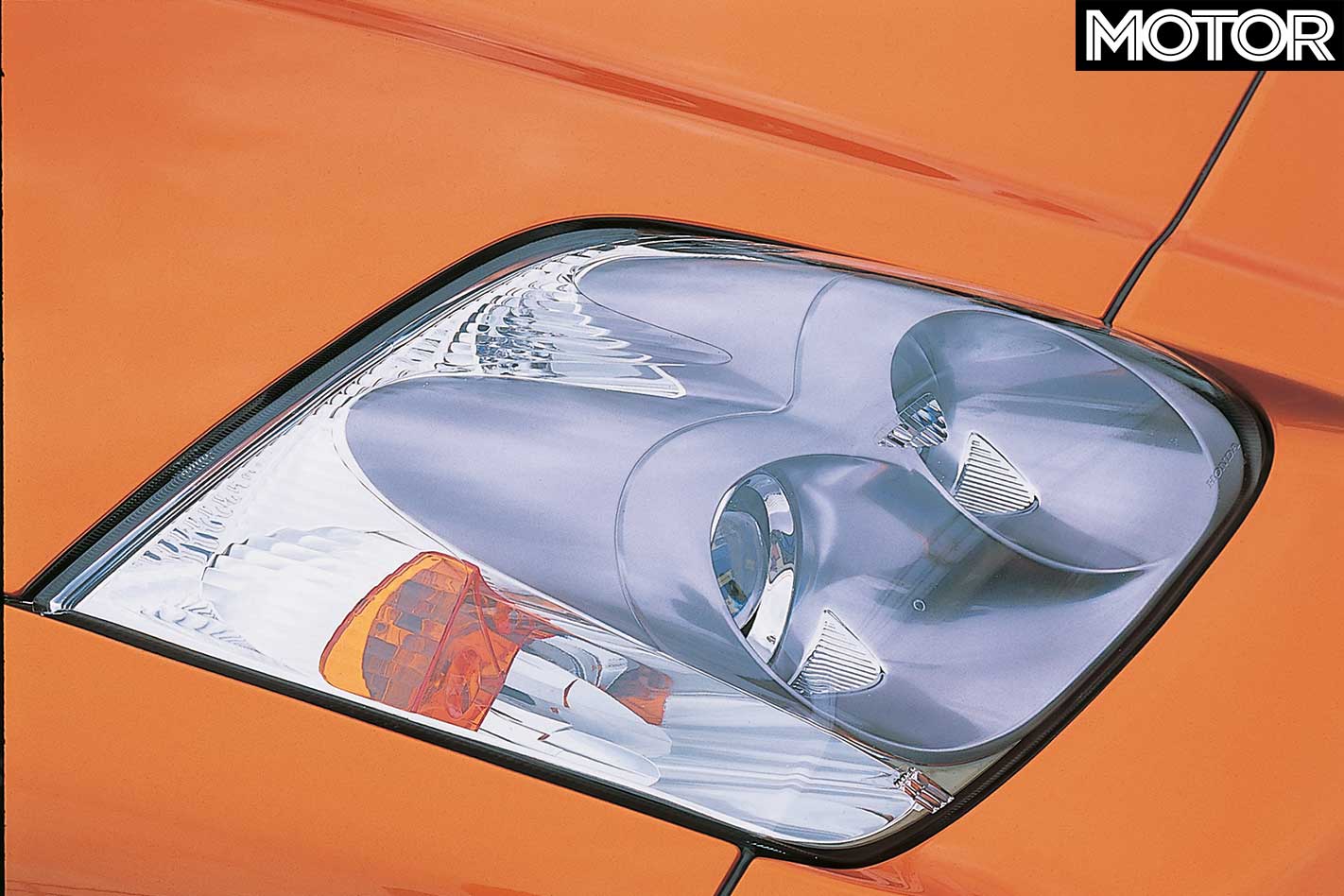
Driving an NSX will be, depending on where you stand on the whole supercar thing, either a revelation or a mild disappointment. For those who don’t like over-centre clutches, floor-hinged pedals, peaky motors with zip flywheel effect and noisy induction set-ups, the NSX is going to be a breath of fresh air. But for those who don’t mind suffering for their art, the NSX is a bit too close to being like a bigger, faster Civic. But it’s hard to criticise a supercar for being civilised and easy to drive. So we won’t.
But we would point out that if you’re after a truly visceral experience, then an NSX isn’t going to deliver that. Think ‘sanitised’ without the nasty connotations. Maybe ‘clinical’ is a better word.
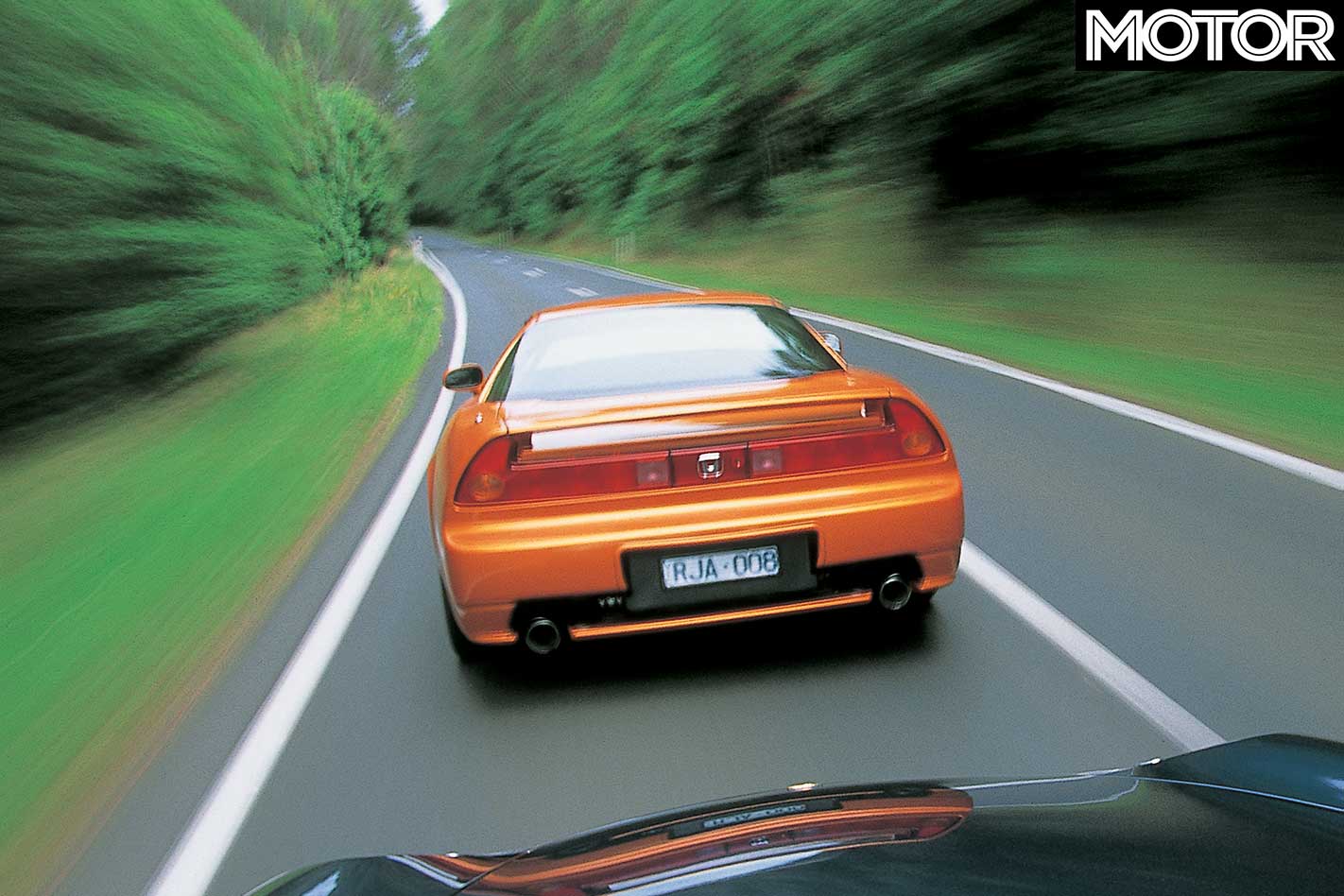
Either way, you won’t get the wholegrain rasp that is a 911 flat six, you won’t get the fidgety steering that is a Boxster, you’ll miss out on the throttle response of a V12 Ferrari and you can forget about the gated shifter of a Lambo. You will, however, go very fast from point A to point B. But is that enough?
A lot of people are put off the idea of owning something as specialised as an NSX on the basis of unreliability and running costs. But in an age where even Ferraris are reliable and well built, you can pretty much count on NSX ownership being relatively angst-free.
Servicing should take place every 10,000km, but if you’re not doing at least 20,000km a year, then an oil change and minor service should be carried out every six months.
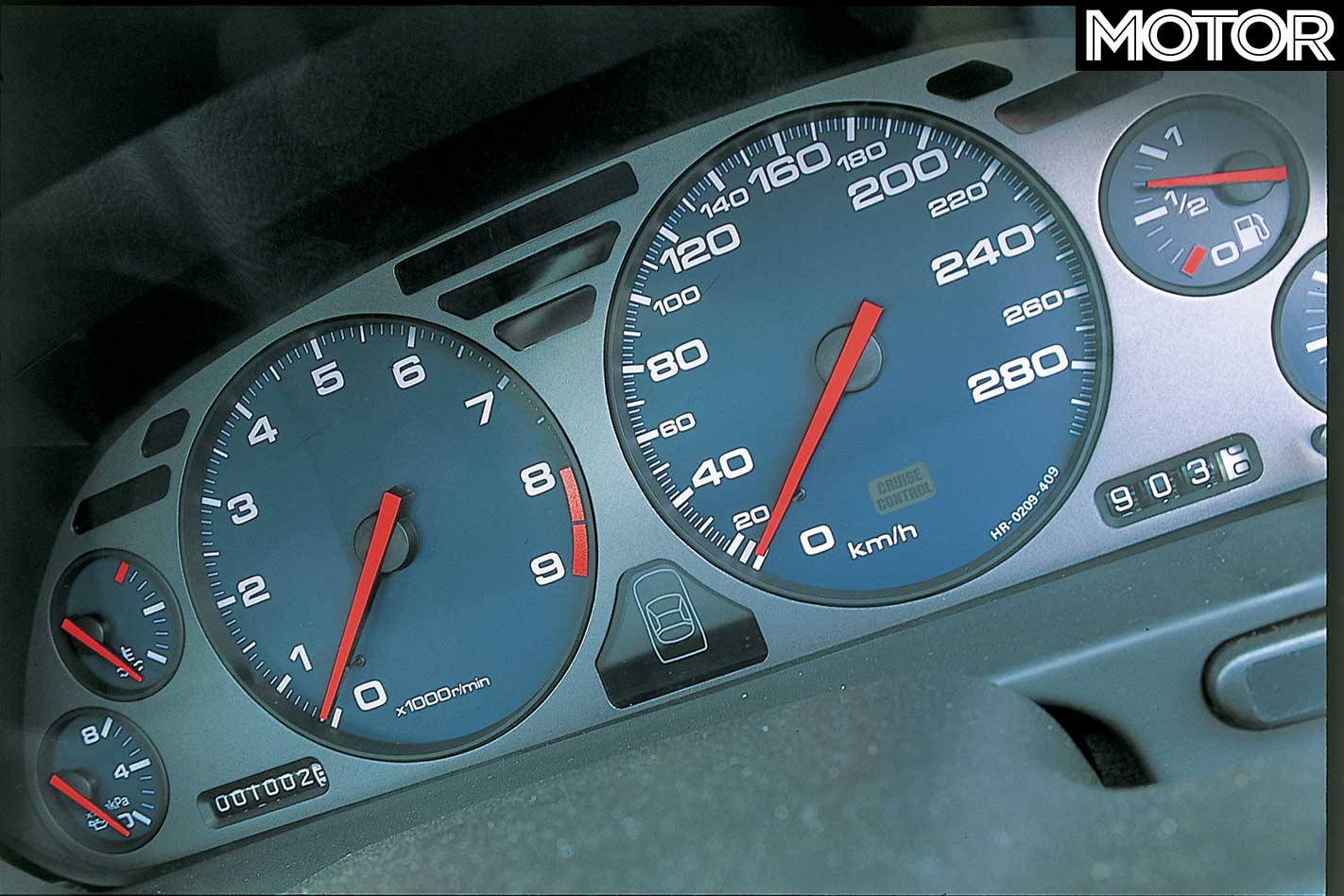
The dollars charged for this will vary depending on the kilometres covered, but 40,000km is the biggie because the screw-and-locknut tappets have to be set at this point, and getting them wrong does not bear thinking about. That said, a little top-end noise from the quad-cam engine is to be expected.
The timing belt needs to be changed every 100,000km or five years (whichever comes first) and that service should still come in at under a grand (but only just). Body repairs aren’t impossible, but they need to have been carried out by somebody who understands aluminium and can work with it. Not all panel shops can.
Workshops we talked to reckon they see the odd clutch come in for replacement (they just wear out), rear tyre life is chronically short (geometry) and there’s the odd weep of oil from the cam plugs. Nothing serious, just annoying. Sounds like a typical Honda to us.
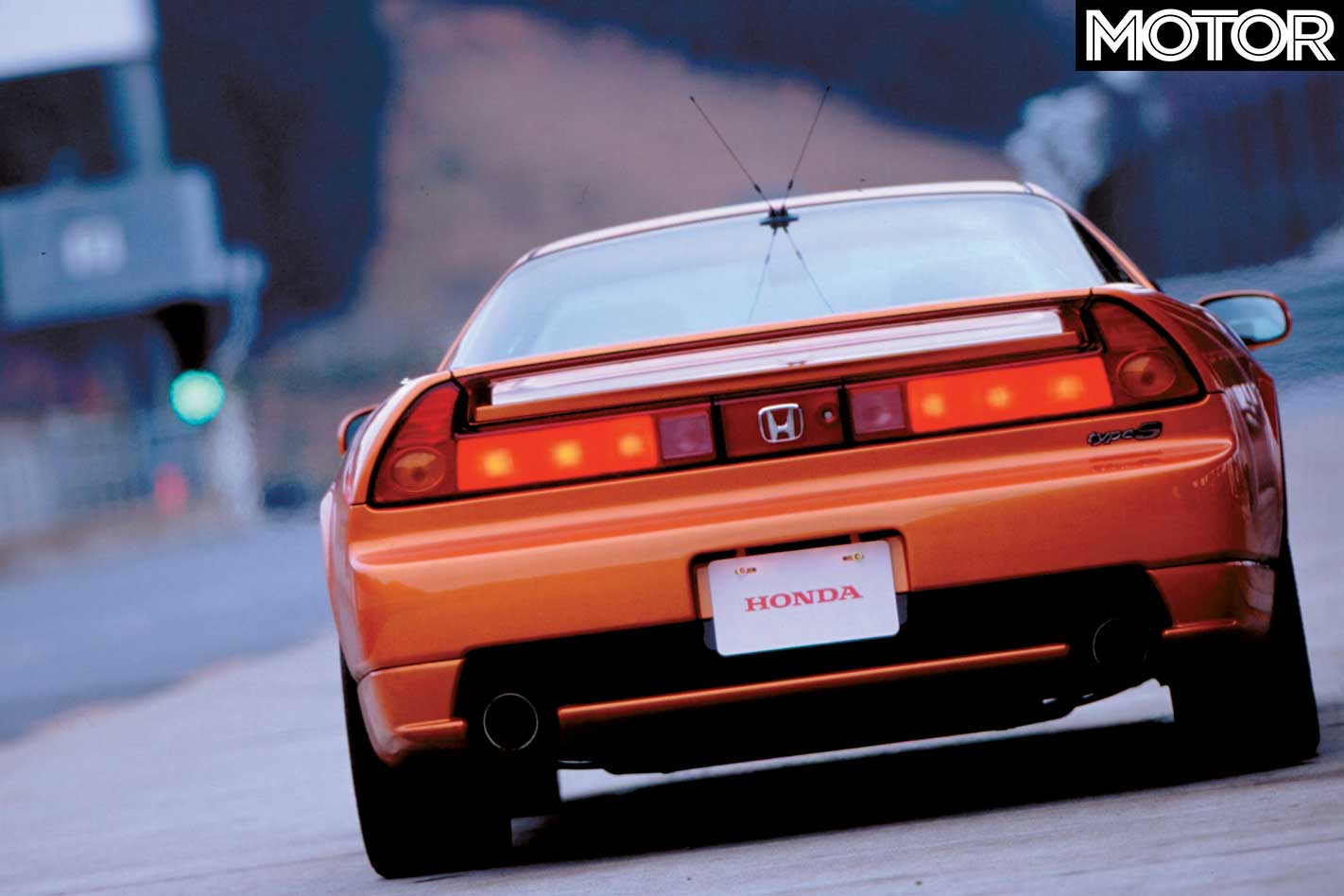
They Said It
“Never before has a road car given me the experience of Formula One like the NSX.” – Paul Ellis, June 1995
“It is slick and devastatingly quick, yet makes few demands of the driver. Quite simply, it is a performance car of excellence, but dispatches day-to-day driving duties without question.” – Jonathan Hawley, May 1997
“The NSX is a beautifully balanced car, primed with poise and agility like a cat bounding through a house.” – Paul Ellis, June 1997
FAST FACTS 2002 Honda NSX
BODY: 2-door, 2-seat coupe DRIVE: rear-wheel ENGINE: mid-mounted 3.2-litre DOHC 24-valve V6 POWER: 206kW @ 7300rpm TORQUE: 298Nm @ 5300rpm BORE/STROKE: 93mm x 78mm COMPRESSION RATIO: 10.2:1 WEIGHT: 1425kg POWER-TO-WEIGHT: 145kW/tonne TRANSMISSION: 6-speed manual SUSPENSION: double wishbones, coil springs, anti-roll bar (f); double wishbones, coil springs, anti-roll bar (r) L/W/H: 4430/1810/1175mm WHEELBASE: 2530mm TRACKS: 1510mm (f); 1540mm (r) BRAKES: 298mm ventilated discs, four-piston calipers (f); 303mm ventilated discs, two-piston calipers (r), ABS WHEELS: 17 x 7.0-inch (f), 17 x 9.0-inch (r), alloy TYRES: Bridgestone S02, 215/40 ZR17 (f), 255/40 ZR17 (r) PRICE: $254,000 (in 2002)

